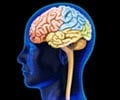A biochemical pathway linked with diarrhea and intestinal function may offer a new therapeutic target for treating ADHD other neuropsychiatric disorders.

In the current study, scientists in China who collaborated with Dr. Cohen discovered that the receptor is also expressed in critical areas of the brain. The senior author on the study is Dr. Minmin Luo, a researcher at the National Institute of Biological Sciences and Tsinghua University in Beijing.
Using a mouse model developed in Dr. Ralph Giannella's laboratory at the University of Cincinnati, in which the GC-C receptor is deleted, or knocked out, the researchers found the mice exhibit hyperactivity and attention deficits. It is the first time that GC-C has been linked to neuropsychiatric disorder, according to the researchers.
"We show that the neurons selectively express GC-C and that its activation amplifies the excitatory responses mediated by other receptors on dopamine neurons in the midbrain," said Dr. Luo. "Working through a protein kinase called PKG, GC-C activity increases brain dopamine levels and thus regulate mouse attention and activity level."
When the researchers treated the GC-C knockout mice with amphetamine-based ADHD medication and a PKG activator, it reversed their hyperactive, inattentive behavior.
"The results indicate important behavioral and physiological functions for the GC-C/PKG signaling pathway in the brain," said Dr. Luo. "The data also suggest new therapeutic targets for neuropsychiatric disorders related to malfunctions of midbrain dopamine receptors."
Advertisement
"This could make the GC-C knockout mouse a good research model for ADHD and other behavioral disorders," said Dr. Cohen. "Efforts to develop activators or inhibitors of the GC-C/PKG signaling pathway may lead to novel treatments for other disorders, such schizophrenia, Parkinson's disease and addiction."
Advertisement











